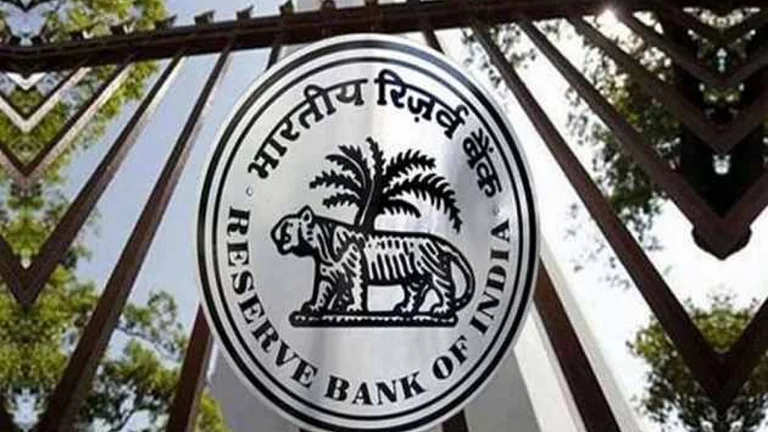The Reserve Bank of India (RBI) is all set to increase its liquidity infusion by injecting more than 16 billion dollars into the banking system. The 16 billion dollars infusion is scheduled to happen next week according to a Reuters report.
RBI Aims To Inject Liquidity To Offset Tax Outflows: How It Will Affect the Public
The central bank is planning to up its liquidity infusion to mitigate banking system strain. Know how the infusion can impact common people
Notably, the banking system is expected to see large outflows owing to tax payments. The report said that the payment towards Goods and Service Taxes will take place around February 20. Traders estimate that the outflows will range between Rs 1.6 trillion to Rs 2 trillion.
The central bank also raised its purchases of government securities to Rs 400 billion (4.61 billion dollar on a review of current and evolving liquidity conditions. Earlier on February 13, the RBI purchased bonds worth Rs 400 billion post after it initially said that it planned to purchase bonds worth Rs 200 billion.
In January, the central bank infused approximately Rs 2.68 trillion in the banking system through Open Market Operations (OMO) purchases, secondary market debt purchases, dollar/rupee swaps and longer duration variable rate repo auctions. Notably, the RBI also announced a four-day variable rate repo auction for Rs 1 trillion which will take place on February 24.
Although these measures are meant for stabilising the banking sector, they have an effect on the common public as well. Here’s a look at some of the ways the public is affected by these liquidity-enhancing measures:
1. Borrowing Costs and Loan Availability
Whenever liquidity tightens due to large tax payments, banks often face higher borrowing costs, which can trickle down to businesses and individuals in the form of higher interest rates for loans. However, RBI’s liquidity boost can help ease these pressures. With sufficient liquidity in the system, banks are less likely to raise lending rates, making loans for homes, vehicles, and businesses more affordable.
For example, if liquidity was tightened, home loan rates would see an increase, impacting current home borrowers as well as new buyers. However, an injection of liquidity can potentially cause interest rates to stabilise or even decrease, benefiting borrowers in paying their monthly EMIs with ease.
2. Banking System Stability and Depositor Confidence
A lack of liquidity in the banking system can potentially cause a cash crunch at ATMs and banks. While a complete liquidity crisis is not probable, the periodic shortfall can affect the smoothness of banking operations. With the RBI aiming to provide liquidity, depositors have no cause to worry about the availability of their money for transactions or withdrawals.
3. Investment and Stock Market Environment
Financial markets are highly responsive to liquidity conditions. A severe shortage of liquidity could result in higher bond yields, stock market volatility, and loss of investor enthusiasm. By enhancing liquidity, the RBI halts the rise in bond yields and keeps government and corporate borrowing costs at acceptable levels. This in turn can potentially boost investor confidence and avoid undesired volatility in the stock market.
For retail investors, this would translate into more stable returns from mutual funds and equity investments. If liquidity tightens substantially, then market corrections might damage the portfolios of investors. With RBI intervention, volatility can be contained and provide greater stability for retail as well as institutional investors.
4. Inflation and Consumer Spending
A liquid banking system provides an assurance of a well-balanced supply of money so that inflation can be controlled. Borrowing gets costly when liquidity is not enough, thus slowing down spending and activity in the economy. However, if there's too much liquidity, then there's a possibility of inflation because people then start spending too much and the supply cannot keep pace with the demand. The management of liquidity by the RBI aims to balance holding inflation at moderate levels while leaving credit available to businesses and customers.
Sustainable inflation for the common people means consistent prices of basic commodities and services. If inflation goes up significantly following a lapse in liquidity management, day-to-day expenses such as food, fuel, and electricity consumption are likely to become costlier.
For consumers, the infusion of liquidity could make loans affordable and help banking transactions to continue smoothly. With tax collections causing periodic liquidity issues, timely intervention by RBI is the key to keeping finance in balance within the economy.
RBI’s decision to increase liquidity to cover tax outflows is not just a technical banking measure—it has direct implications for the public at large. By ensuring smooth credit availability, preventing interest rate spikes, supporting businesses, stabilising the stock market, and keeping inflation in check, the central bank is safeguarding economic stability.
